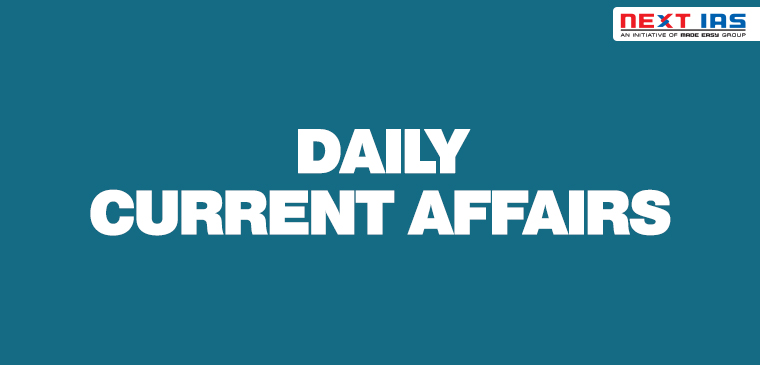
In News
Recently, the Reserve Bank of India (RBI) has released its annual report for 2020-21.
Key Highlights
- Impact of Covid-19 Waves
- While the economy has not moderated to the extent during the first wave of Covid-19, the surrounding uncertainties can act as a deterrent in the immediate period.
- The onset of the second wave has triggered a raft of revisions to growth projections.
- The waiver of compound interest on all loan accounts that had opted for moratorium during March-August 2020 may put stress on banks’ financial health.
- Fall in Cards Transaction Value
- The value of credit card transactions declined by Rs. 1 lakh crore to Rs. 7,30,895 crore in 2020-21 from Rs. 6,30,414 crore in 2020.
- The number of card payment transactions carried out through credit cards and debit cards decreased by 19 per cent and 20.6 per cent, respectively.
- This resulted in a decrease in value of credit card transactions by 13.7 percent and debit card transactions by 5.9 per cent during the same period.
- Increased Digital Payments
- Digital modes of payments increased manifold in the wake of the pandemic, resultant lockdowns and people shopping from homes mostly using digital transactions.
- Overall, the total digital transaction volume in 2020-21 stood at 4,371 crore, as against 3,412 crore in 2019-20, attesting to the resilience of the digital payment system in the face of the pandemic.
- Transactions through the National Electronic Funds Transfer (NEFT) system rose by 12.7 per cent.
(Image Courtesy: BL)
- Rupee’s Status
- The rupee gained by 3.5 per cent (based on USD/rupee closing rates as at end-March 2021 over end-March 2020).
- However, it underperformed vis-a-vis its Asian peers during 2020-21.
- In Q4 of 2020-21, while the Indian rupee remained supported by foreign portfolio flows and merchant-related inflows, aiding the RBI to sell dollars at a gain, dollar purchases almost matched sales.
- Balance Sheet
- The size of the RBI balance sheet increased by 6.99 per cent from Rs. 53,34,792 crore as on 30th June 2020 to Rs. 57,07,669 crore as on 31st March 2021.
- Banks were better positioned than before in managing stress in their balance sheets in view of higher capital buffers, improvement in recoveries and a return to profitability.
- Provision Coverage Ratio
- The gross non-performing assets ratio of scheduled commercial banks declined to 6.8 per cent by end-December 2020, from 8.2 per cent in March 2020.
- However, prudent provisioning had resulted in an improvement in the provision coverage ratio to 75.5 percent from 66.6 percent.
- Gain from Foreign Exchange
- RBI’s gain from foreign exchange (Forex) transactions rose from Rs. 29,993 crore to Rs. 50,629 crore in 2020-21.
- Transfer of Surplus
- Under Section 47 of the RBI Act (1934), RBI transferred the surplus to the government following a sharp fall in provisions and gains from forex transactions during the year ending with March 2021.
- It transferred Rs. 99,122 crore to the government.
- A big part of this was profit from the sale of dollars during the last three months of FY21 (USD 25.94 billion in March, USD 24.57 billion in February and USD 15.37 billion in January).
- The move is likely to boost the government’s finances and help it combat the second wave of the Covid-19 pandemic.
- Predictions for Next Year
- The RBI is expecting a 10.5 per cent growth for the FY 2021-22.
- With the increased vaccination and Covid-19 cases falling, a sharp turnaround in growth is likely, supported by strong favourable base effects.
- Demand-supply imbalances could continue to exert pressure on the prices of pulses and edible oils even as cereals prices could likely see softening on the back of bumper foodgrains production in 2020-21.
- It expects global crude oil prices remaining volatile in the near term.
- The prospects for FinTech in India’s financial system in 2021-22 will depend upon the degree of entrenchment of digital usage.
- Suggestions
- For a self-sustaining GDP growth trajectory post-Covid-19, a durable revival in private consumption and investment demand together would be critical.
- Both private consumption and investment account for around 85 per cent of GDP.
- It has asked banks to closely monitor bad loans and prepare for higher provisioning and the Supreme Court (SC) order lifting the ban on classification of non-performing assets (NPAs).
- It is important for the government to adhere to a clear exit strategy and build fiscal buffers, which can be tapped into in events of future shocks to growth.
- For a self-sustaining GDP growth trajectory post-Covid-19, a durable revival in private consumption and investment demand together would be critical.
National Electronic Funds Transfer
Foreign Portfolio Investment
Non-Performing Assets
Foreign Exchange
Section 47 of the RBI Act, 1934
FinTech
Exit Strategy
|
Source: TH
Previous article
Colonial-era Genocide in Namibia
Next article
US Denies Rejoining Open Skies Treaty